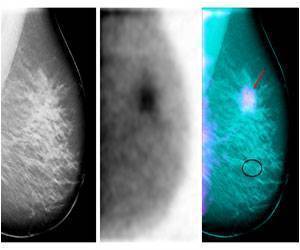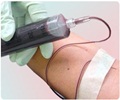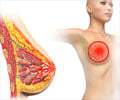
"The onus is on physicians to critically analyze data to shape our treatment recommendations for patients, weighing the potential toxicities of treatment against clinical benefit," said Rachel Blitzblau, M.D., Ph.D., the Butler Harris Assistant Professor of Radiation Oncology at Duke University Medical Center. Blitzblau was the senior author of a study published online Dec. 8, 2014, in the journal Cancer.
Blitzblau and colleagues launched their inquiry to determine whether clinical practice changed as a result of a large randomized, prospective study first published in 2004 that compared treatment options for women ages 70 and older with early-stage hormone-receptor positive breast cancers. The CALGB 9343 study reported limited benefit for adding radiation therapy plus the drug tamoxifen after lumpectomy among older women.
Specifically, the 2004 study's 5-year data showed a small but statistically significant reduction in the rate of cancer recurrence; a similar finding was reported again in 2012 with a decade of data. However, the addition of radiation to tamoxifen after surgery did not improve overall survival among the study participants at either of the reporting periods.
"The discussion at the time of the first CALGB report in 2004 was that we should consider omitting radiation for these women, because the small observed benefits might not be worth the side effects and costs," Blitzblau said, adding that side effects include fatigue, discomfort and changes in the radiated breast tissue, among others.
But little has changed following publication of the study, with about two-thirds of women still getting radiation therapy. Blitzblau and colleagues analyzed cancer treatment patterns from a national health database called the Surveillance, Epidemiology, and End Results (SEER) registry. They found that before the CALGB study results were published in 2004, 68.6 percent of older women who would have been eligible for enrollment in the CALGB trial received radiation therapy. In the five years after the study was first reported, the rate dropped, but only slightly, to 61.7 percent.
Advertisement
She said physicians might have delayed making practice changes until longer-term data was available; the research team's analysis did not include results after the 10-year data from CALGB was published in 2012. In addition, she said, there is likely lingering concern among both doctors and patients that reducing treatments may worsen outcomes for older women who have excellent overall health and therefore longer life expectancies.
Advertisement
"It's important to improve patient and doctor communication to ensure that the right patients are getting the right treatment at the right time," Blitzblau said. "As we work toward more efficient and evidence-based medical practice in all medical specialties, we will need to understand what processes may be needed to spur change."
Source-Eurekalert















